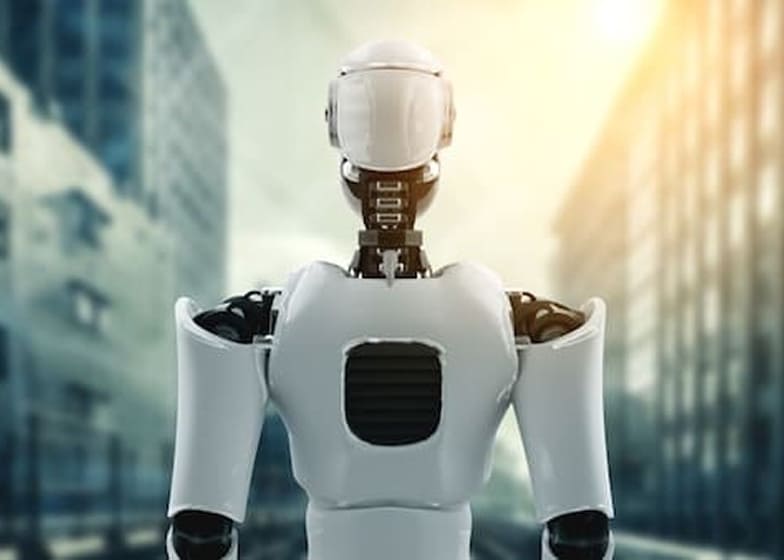Robotics is no longer confined to factories and industrial applications; it is rapidly becoming an integral part of everyday life. Advances in artificial intelligence, machine learning, and sensor technologies have enabled robots to perform tasks that were once thought to require human intelligence. Today, robots are assisting in homes, healthcare facilities, offices, and public spaces, making everyday tasks easier, safer, and more efficient. From automated vacuum cleaners to advanced surgical robots, these machines are transforming how people live and work.
In homes, robots are increasingly handling chores such as cleaning, lawn maintenance, and security monitoring. Smart home robots can interact with occupants, provide reminders, and even assist the elderly or people with disabilities. In healthcare, surgical robots enable precision operations, while rehabilitation robots support patient recovery. Service robots in hotels, restaurants, and retail stores enhance customer experience by providing information, delivering goods, or automating routine tasks.
Industries and businesses are also leveraging robotics to improve efficiency, reduce costs, and enhance safety. Collaborative robots, or cobots, work alongside human employees in manufacturing and logistics, handling repetitive or hazardous tasks. This reduces workplace injuries and allows humans to focus on creative and decision-making roles. Autonomous delivery robots and drones are revolutionizing logistics by providing faster, contactless deliveries, especially in urban areas.
As robotics technology advances, future applications will become more intelligent, adaptive, and integrated with AI and IoT systems. Robots will not only perform tasks but also anticipate human needs, make decisions, and learn from their environment. This evolution opens significant economic opportunities, allowing businesses and individuals to save time, reduce labor costs, and generate revenue through new robotics-based services. The integration of robotics into daily life promises a more efficient, convenient, and interconnected future.
What is Robotics?
Robotics is a branch of technology that deals with the design, construction, operation, and application of robots—machines capable of performing tasks autonomously or semi-autonomously. Robotics combines principles from mechanical engineering, electrical engineering, computer science, and artificial intelligence to create machines that can sense, process information, and act in the physical world.
Robots can range from simple machines like robotic vacuum cleaners to complex systems such as surgical robots, autonomous vehicles, and industrial manufacturing robots. They are designed to perform repetitive, dangerous, or precise tasks that may be difficult or inefficient for humans to accomplish manually.
Robotics offers substantial economic opportunities. Businesses can reduce labor costs, improve efficiency, and increase productivity, potentially saving $50K–$500K annually depending on scale. Individuals and entrepreneurs can also profit by developing robotic solutions for healthcare, logistics, home automation, and other emerging markets.
Understanding Robotics
Definition of Robotics
Robotics is the interdisciplinary field focused on designing, building, and operating robots that can perform tasks autonomously or with human guidance.Businesses can reduce labor costs and improve efficiency, potentially saving $50K–$500K/year depending on scale.
Core Components of Robots
- Sensors: Detect environmental inputs like motion, temperature, or obstacles.
- Actuators: Enable movement or task execution.
- Controllers: Process data and make decisions.
- Software/Algorithms: Guide robot behavior and learning.
- $ Perspective: Advanced robots improve productivity and reduce operational errors, saving significant costs in manufacturing or service sectors.
Types of Robots
- Industrial Robots: Assembly, welding, packaging.
- Service Robots: Healthcare assistance, hospitality, retail.
- Domestic Robots: Cleaning, lawn care, home security.
- Autonomous Robots: Drones, self-driving vehicles.
- $ Perspective: Businesses and entrepreneurs can generate revenue by producing, selling, or deploying robots in these sectors, potentially earning $50K–$1M+ annually.
Applications Across Industries
- Robotics is transforming multiple sectors:
- Manufacturing: Automation and precision work.
- Healthcare: Surgical assistance, rehabilitation, patient monitoring.
- Logistics: Automated warehouses and delivery.
- Education: Teaching STEM concepts and programming.
- $ Perspective: Companies can improve efficiency and reduce operational costs, while educational robotics can be monetized through courses, kits, or learning platforms.
Benefits of Robotics
- Increases productivity and accuracy.
- Reduces human labor in dangerous or repetitive tasks.
- Enables innovation in products and services.
- $ Perspective: Investing in robotics can lead to cost savings and create new revenue streams, from $50K to $500K+ per year depending on industry and adoption.
Challenges in Robotics
- High initial development and implementation costs.
- Need for skilled professionals to operate and maintain robots.
- Regulatory and safety considerations.
- $ Perspective: Overcoming these challenges ensures that robotics investments deliver returns and reduce risks of losses.
Robotics in Daily Life
Domestic Robots
Robots are increasingly helping with household tasks like vacuuming, lawn mowing, window cleaning, and security monitoring. Examples include Roomba, robotic lawn mowers, and smart home security bots. These robots save time and reduce labor costs for households, while businesses selling or renting domestic robots can generate $5K–$100K/year per product line depending on scale.
Healthcare and Medical Robots
Robots assist in surgeries, rehabilitation, patient monitoring, and elderly care. Surgical robots enable precision operations, while exoskeletons help patients regain mobility. Hospitals and clinics reduce medical errors, improve patient outcomes, and save operational costs, potentially $50K–$500K/year. Robotics companies providing healthcare solutions can generate substantial revenue.
Service and Hospitality Robots
Robots are used in hotels, restaurants, and retail stores to provide information, deliver goods, and enhance customer experiences. They can greet customers, serve meals, or guide shoppers. Businesses can reduce staffing costs and increase customer satisfaction, creating potential revenue gains of $20K–$200K/year depending on deployment scale.
Education and Learning Robots
Robots are used in classrooms and training centers to teach STEM concepts, programming, and robotics itself. They provide interactive and hands-on learning experiences. Educational institutions and edtech companies can monetize robotics kits and courses, generating $5K–$100K+ annually per program.
Industrial and Collaborative Robots (Cobots)
Cobots work alongside human employees in factories, warehouses, and logistics centers. They handle repetitive, hazardous, or precision tasks, improving efficiency and safety. Companies can save on labor costs, reduce workplace injuries, and optimize production, potentially saving $50K–$1M/year depending on industry size.
Summary
Robotics is rapidly moving beyond industrial use into everyday life, transforming homes, healthcare, education, logistics, and workplaces. Domestic robots handle chores and security, healthcare robots assist in surgeries and patient care, and service robots enhance customer experiences in retail and hospitality. Collaborative robots in industries improve efficiency and safety, while autonomous delivery and transport robots optimize logistics. As robotics technology advances, these machines will become smarter, more adaptive, and integrated with AI and IoT, offering time savings, operational efficiency, and new revenue opportunities. Businesses and individuals leveraging robotics can reduce costs, increase productivity, and generate substantial financial gains while enhancing convenience and quality of life.
















